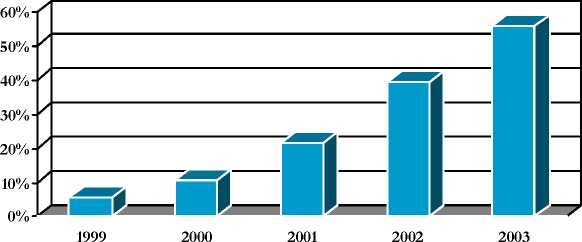worldwide sales in China and transferred R&D and production research to China, making it a
regional presence. Nokia’s largest market is China, with revenue of over $2.5 million and
exports valued at $2.1 billion for 2003. Siemens’ early, but smaller, commitment continued to
pay dividends while Samsung, although late, was investing heavily (ChinaNex, 2004).
Local producers have captured more than 50% of China’s domestic market, but joint
ventures in China are still their primary production bases to supply the global market. In 2001,
the total number of mobile handsets exported from China was 39.63 million, increasing to 63.15
million in 2002 and 95.23 million in 2003 (Ministry of Commerce, 2004). More than 98% of
these exported handsets were manufactured by those joint ventures (MII, 2004). Although these
foreign companies have lost their dominating role in China’s domestic market, they are
producing more handsets than China’s domestic firms (about 70% of total production in 2003)
increasingly for export. However, as of 2004 foreign companies through joint ventures still
dominate the domestic high-end handset market (with a price greater than 3000 RMB/$400 per
handset).
Figure 2. Local Brand Market Share Growth

Source: Ministry of Information Industry (various years)
China's Mobile Handsets FINAL DRAFT 2006.sph ERSA2006 Greece
More intriguing information
1. A Study of Prospective Ophthalmology Residents’ Career Perceptions2. THE ECONOMICS OF COMPETITION IN HEALTH INSURANCE- THE IRISH CASE STUDY.
3. The name is absent
4. The Determinants of Individual Trade Policy Preferences: International Survey Evidence
5. Locke's theory of perception
6. Psychological Aspects of Market Crashes
7. The name is absent
8. Towards a framework for critical citizenship education
9. Are combination forecasts of S&P 500 volatility statistically superior?
10. The name is absent